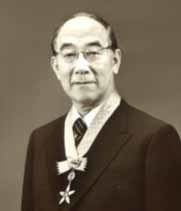Name Hamao Umezawa | ||
 | ||
Died December 25, 1986, Tokyo, Japan Books Enzyme Inhibitors of Microbial Origin, Development and Mechanism of Action of Bleomycin | ||
Kanamycin and Hamao Umezawa (1914–1986)
Hamao Umezawa (梅沢 浜夫, Umezawa Hamao, October 1, 1914 - December 25, 1986) was a Japanese scientist who discovered several antimicrobial agents and enzyme inhibitors.
Contents
After graduating from the Musashi Junior and Senior High School, Umezawa completed his medical degree at the University of Tokyo Graduate School of Medicine in 1937. After serving in Japanese army during World War II Umezawa did work on tuberculosis which led to his discovery, in 1956, of antibiotic kanamycin. By this stage Umezawa was heading the Institute of Microbial Chemistry in Tokyo where his main focus was antimicrobial agents manufactured through fermentation processes. Also in the mid-1950s Umezawa discovered kasugamycin, a compound useful in combating rice molds. In the early 1960s he discovered the cancer drug bleomycin.
The Hamao Umezawa Memorial Museum in Setagaya, Tokyo was named in his honour.
